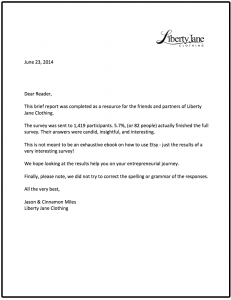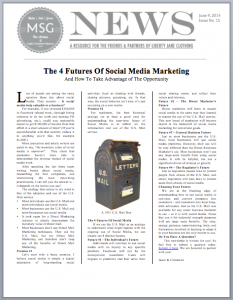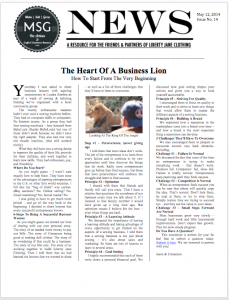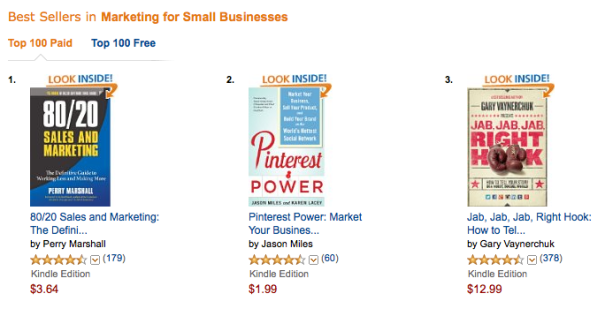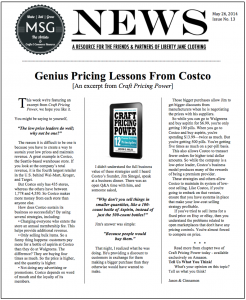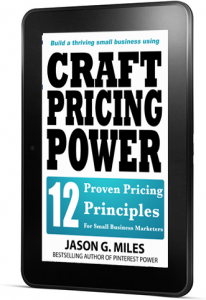Hi friends,
 Hey, I wanted to take a minute and thank all of you who have picked up a copy of my new book Income Power – and taken advantage of the special offer currently underway on Amazon as part of the 20 Life Changing Books promotion. If you haven’t gotten my book plus 19 more for just .99 cents – be sure to snag a copy.
Hey, I wanted to take a minute and thank all of you who have picked up a copy of my new book Income Power – and taken advantage of the special offer currently underway on Amazon as part of the 20 Life Changing Books promotion. If you haven’t gotten my book plus 19 more for just .99 cents – be sure to snag a copy.
Today I thought I’d share a sample chapter from Income Power – it’s from one of my favorite chapters – about how to negotiate a starting salary. Of course you can also “look inside this book” on Amazon and see a fairly big chunk as well as the Table Of Contents. Maybe you don’t need this information, but if you have a spouse, family member, or friend in a situation where they might, then please share this with them.
I have included the entire chapter in this post below, and also saved it as a PDF if you’d like to download it and send it to someone more easily. Get the PDF file version here.
* * * * *
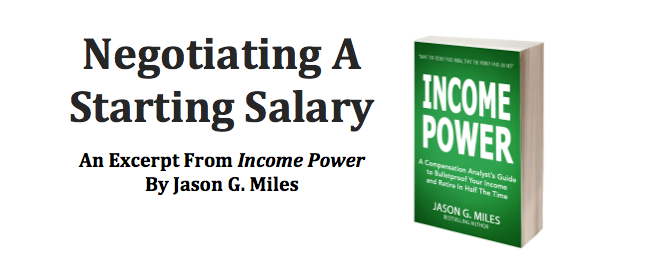
Chapter Seven
If you’re trying to increase your income via a traditional employer, my best recommendation is to find a large company and seek promotions within it. In a large organization there are simply more opportunities for promotion than in a smaller business.
Over time promotions in one company will result in your resume looking more stable, as compared to an employee that has moved from one company to the next in pursuit of new opportunities.
Averaging 24% Salary Increases Every Two Year
In the period of my career between standing in the vault and retiring from the 9-to-5 grind I worked for twenty years.
In that time period I worked for my first employer for roughly sixteen years and my second for roughly four years. But I changed jobs nine times during that twenty-year period.
As I was writing this chapter I went back and calculated my salary change associated with each job change to see what percentage of increase I was able to achieve as I negotiated my new starting salary amounts.
The largest increase I was able to achieve was 45%. The smallest was a straight transfer with no pay increase. The average increase over the course of the nine job changes was 24%. So every two years I received a 24% pay increase on average. Ultimately rising into the six-figures.
You Have Maximum Negotiating Power Before You Start
Before you accept a job, either within your existing company or at a new one, you have an opportunity to impact your pay more than at any other time. So if you’re smart, you’ll put yourself in the situation of being hired for a new job, and then do a good job working through the salary negotiation process.
Here are two of the reasons why your salary negotiating power is highest as you enter a new job:
- Your new manager has a problem and you’re the answer. Every day the position goes unfilled your new boss is falling further behind on goals. You are the answer to solve that problem. Often times a manager will get very creative if they are desperate enough.
- The manager is at their “most optimistic” about you before you start. Many times managers get very high on the potential of a new employee. They see you as the answer to all their problems. You are the ace, the closer, the guru, or the administrative genius. You have the opportunity to use that positive emotional energy to secure higher pay.
In addition to these emotional reasons, there are also “budget & policy” reasons the manager has more flexibility during the salary negotiation phase. The amount of flexibility will differ from one organization to the next, and from one situation to the next, but frequently there is some flexibility that the manager is working with to finalize your salary negotiation. It may be limited, but there is usually some flexibility.
Your job is to gently inquire until you discover the maximum potential of that flexibility, and get your best offer, without damaging your relationship with your new boss.
Here are some of the budget and policy reasons that flexibility exists:
- Managers have an amount in their budget for the position. Generally it is the amount the prior employee made. That is, in essence, “all the money they have to offer”. If they needed more to meet your demands, then they would have to go and ask their boss for more salary budget or find it from another place within their budget.
- They know the current grade level for the position, which governs the minimum offer they can make, and the maximum offer they can make. This is the “theoretical minimum and maximum” they could offer if they had the money to do so.
- They know what the other employees in that position are making.
- They know what they are making.
- They know what their boss is willing to approve.
A Practical Example:
Let’s look at a quick example and see how these factors mix together to influence a manager’s behavior:
- You are applying for a Senior Sales Manager position.
- The position has been formally placed into the Grade Level “20”slot in the company’s Salary Guide, which means, in their system, that the minimum salary must be $62,000 and the theoretical maximum salary can be up to $82,000.
- The manager knows the other people in that same job are making around $65,000.
- The manager only has $68,000 in the budget for this position, because that is what the prior employee was making.
- The manager has a very tight budget and there aren’t any other funds that could be moved around to make the salary any bigger.
So you can see that the manager is working with a range of possible salaries from $62,000 to $68,000. That is the practical range you can negotiate within. Theoretically you could be paid up to $82,000 for the job, which is the maximum of the pay range, but the supervisor doesn’t have that much money at his/her disposal.
If you state your “salary requirements” are $75,000, the manager can either counter back with $68,000 without too much drama, or they can say, “I’m going to have to check with my boss about that“.
If the manager does counter back at $68,000, and you accept, you’ve gotten the best possible outcome. If you would have made the manager go to his boss and ask for more money, you may have gotten it, but you may have stirred up a drama that complicated the negotiation and your future opportunities.
On the other hand, if you accidentally asked for too low a salary and said, “I really need $60,000“, thinking you were asking for a fair amount, they would likely come back and say, “Good news, I’m happy to offer you $62,000“. They would do that because by policy your minimum salary must be $62,000. You’d be happy with the $62,000, and you would never know they were willing to go to $68,000 to get you. In this case you left an additional 8.8% salary increase on the table – bummer!
The Parity Offer Trap
It’s an odd thing, but generally, if you’ve made $80,000 at a previous job or position, then in the salary negotiation for a new job, the manager will offer you $80,000. It’s almost like people think if you’re earning $80,000 then you “need” at least that much, or maybe they assume that you’ll be “okay” with that much.
They are comfortable offering you a salary on par with your prior salary. It’s a parity offer. It is like they want to keep you in income equilibrium. You don’t want income parity as you get promoted. You want a nice big salary increase. It’s your job to focus the conversation on a new level of pay and explain why a new amount is needed.
Of course the Parity Offer is fine if you’re changing jobs under a hardship circumstance and all you’re hoping to do is keep your salary the same level as you go through the transition to a new job. But it’s not good if you’re looking for more money.
Reasons To Accept The Parity Offer
There are some circumstances in which taking an offer on par with your prior salary is a wise move. Let’s review a few of those briefly,
- Moving from one industry, like Human Resources, to another industry, like Sales. If the new industry you’re moving into has a much higher set of potential salary ranges and opportunities, then it’s wise to move into that new career field even if the first salary in it is on par with your prior salary. I did that once and it worked out great.
- Moving into a role that has more benefits, perks, and rewards. If you can get a dream job, let’s say an assignment in Hawaii, then even if the offer is no higher than your last job, it is likely worth it.
- Moving away from a toxic boss or team. If you are running from a mess then pay isn’t your top priority, your sanity is.
- Moving into a department that offers faster promotions. Some departments in a company are just frozen with long-time employees that will never budge. Other departments have a steady flow of opportunities. All things being equal, you want to be in a department that has upward mobility.
The Step Up The Ladder Increase
It might sound obvious, but you don’t get ahead financially unless you move up the career ladder. Don’t apply for a job that is not clearly superior to your prior job. If you don’t know whether it is or not talk to a neutral third-party confidentially, like a nice and trustworthy HR recruiter. If you simply move laterally, from random job to random job, you’ll struggle for years to get ahead. If you apply for higher-level roles and get them the pay increases are almost automatic.
The First Person To State An Amount Wins
There is an old adage in negotiation that the first person to state an amount loses, but I’ve found that to be untrue in salary related matters. In fact, the exact opposite is true for salary negotiations in the hiring process. If the hiring manager has selected you as the finalist, and you know it, then they are going to want to state your salary requirement before they offer you an amount. You “claim” the amount you want and then the manager is forced to respond.
Your job is to know enough about the new position you’re applying for so that you can put a realistic, but large number in front of them in a gracious way.
Frequently job applications have a beautiful question, “salary requirements_____________”.
That is a fantastic tool in your tool belt. Don’t fear it. Use it to your advantage. Research enough to know a high, but not crazy number, and fill in that blank.
Why Stating A Number First Is Better
Let’s say your interviews are successful and the manager says, “let’s talk about the salary for the position, I noticed you indicated you need $117,000 on the application”, If they really like you for the job, and your stated salary is within reason for that position, the manager will naturally move toward your number as much as possible and then counter back with an amount that is within his/her budgetary limit.
If you put out a big first number, then their offer is frequently more than they might have planned to offer you. You don’t have to talk them into anything. Your opening amount causes them to react to you and when that happens you have the high ground in the negotiation. That’s a good thing at this point in the process.
If on the other hand the hiring manager puts a number in front of you first, and it is not a number you’re happy with, then you have to decide whether to give up on your dream of a higher salary and accept the offer, or counter-back with a higher amount. In that situation you are the one reacting and you’ll have to make a strong argument for why a higher salary is needed.
Additionally, if you counter back with a higher amount, but the manager holds firm and doesn’t budge, then you’re left in the awkward position of either accepting it or walking away. If you accept the lower offer, then as you start the job, the manager may feel like you’re unhappy with your new salary and not 100% on-board. Sadly, that might be true. It’s not a good way to start a new job.
How To Justify What You Need
If you put a high salary amount on the “salary requirement________” field in your application and at the end of the interview process the manager asks you about that amount, you need to justify it.
The manager will frequently “probe” to discover how committed you are to that number before offering you a specific amount. It is common for the application to ask for your prior salary as well. So if there is a difference between your last salary and your new “salary requirement” the manager is going to be skeptical.
There are a million things you can say to justify your amount. For example,
- Your spouse has lost their job.
- Your kids are about to enter college.
- Your health-care costs are skyrocketing.
- You are now caring for your aging parents.
- You need to start saving for a home.
- You never saved anything for retirement and you need to start saving aggressively.
Whatever is actually true, and sounds compelling, use it. It can be personal information – that’s okay in this situation. The more compelling it is the better. Oddly enough, managers are frequently open to helping you solve personal challenges as an opening gesture as you start a new position. They do this because they want you to like them and are willing to offer you a premium to be seen as “cool”.
But six months later, they probably won’t be sympathetic to your personal needs. So be careful. This type of personal justification is only relevant and useful during the salary negotiation period for a new role. If you try to use these arguments to simply get a raise in your existing position, it will hardly ever work.
You Decide When It’s Over
The decision to stop the negotiation is truly yours before you start a job. There is a lot of power in that realization. You should realize that the hiring manager has invested a ton of time in the process. They’ve rejected all the other candidates, and it’s down to you. They want you – and they don’t want to start over at the beginning. So if you can frame your salary demand in a way that makes it appear to be a true need, then you’re in a good spot to continue the conversation.
A Practical Example
Let’s say you put your number on the table first, and you tell them you’ll need $90,000 in the new role. But they counter back with $82,000. You can do the following constructive things to improve your chances of getting the $90,000 you seek.
Ask “Why” – You might be surprised, but in the salary negotiation, if you can calmly and professionally discuss the topic of your salary with your prospective new boss, they’ll probably really applaud you for it. It’s not an easy thing to do.
One way you can extend the conversation is to ask the question “is there a budget constraint or HR policy that is limiting your ability to finalize things at $90,000?” That question will probably surprise them, but you might rattle a candid answer out of them in the heat of the moment. Just remember it must be done in a calm friendly tone. If it sounds like you’re arguing or defensive then the manager will clam up and shut down.
The manager might respond back with an actual reason, like, “well, the maximum of the salary range is $84,000 and HR won’t let us extend offers past that amount“. Boom. You’ve just discovered their maximum per policy. Or maybe the manager will say, “well, I’ve got several people on the team with more experience than you and they aren’t making that much“. Boom. You’ve just discovered the peer group constraint.
Ask “When” – A great question to ask is something like, “if I could accept the offer at $82,000, how quickly do you think you’d be able to get me to the $90,000 level if I do a great job for you?” Maybe you’d get the manager to make you a promise to try to get you a raise sooner than normal. Or maybe they’ll find another creative way to finalize the deal.
Let Them Know You Need To Discuss It With Your Partner – Another great way to extend a negotiation is by bringing in an appropriate third party. Let the hiring manager know that you need to check with someone else, ideally your spouse. Then you can come back and say, “I know it sounds funny, but [insert spouses name] really reminded me last night that [insert the reason you need more money], so I’m really going to have a hard time accepting that offer – so I’m not sure what to do at this point – man I really want to join your team, but this is a tough situation.”
Key Phrases To Avoid
There are key phrase you definitely want to avoid in the process of negotiating your starting salary. Let’s review a few of them together. Don’t use,
No – For example, instead of saying, “I cannot accept that offer“, say, “That amount doesn’t meet our household budget needs, so I’m not sure what to do at this point”. The difference is that if you say you cannot accept the offer – then you do end up accepting the offer – you look like a liar. Or worse, if you say, “I cannot accept that offer” the manager might assume you are ending the conversation and that your final answer is “no”. They might move on to the next candidate.
I’m worth it – Saying you’re worth a certain amount is never a wise phrase. It comes off as arrogant, sets you up for future harsh judgments, and isn’t prove-able. Instead consider saying, “to meet my families financial needs, I really need X amount“.
X Amount Is Fair – The problem with using this phrase is you don’t know what your new coworkers are making, or what your new boss is making – the hiring manager does know those pieces of information, so they probably know what’s fair more than you do. So if you say, “$80,000 is fair” you run the risk of the hiring manager saying, “no – actually it’s not and here is why…”
I Deserve It – This is probably the worst phrase you can possibly use. Why? You haven’t worked a single day for the new boss yet. You don’t deserve anything until you prove you are a valuable employee in their department.
Conclusion
If you get good at making career moves, then the opportunity to step up into a higher salary is fairly simple. And when you’re in the heat of the discussion over your new salary, be sure to take your time, be calm, and think clearly about each step in the dialogue. This is your best shot at getting a big raise.
* * * * *
I hope you enjoyed that sample chapter! Don’t forget to pick up a copy of my new book, plus 19 more for free on Amazon, for just .99 cents. Hurry, this offer ends Sunday July 29th.


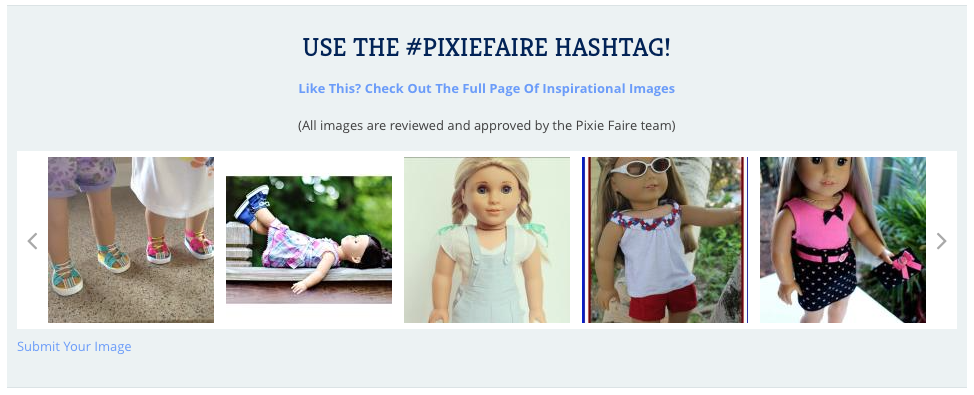





 Hey, I wanted to take a minute and thank all of you who have picked up a copy of my new book Income Power – and taken advantage of the special offer currently underway on Amazon as part of the
Hey, I wanted to take a minute and thank all of you who have picked up a copy of my new book Income Power – and taken advantage of the special offer currently underway on Amazon as part of the 
